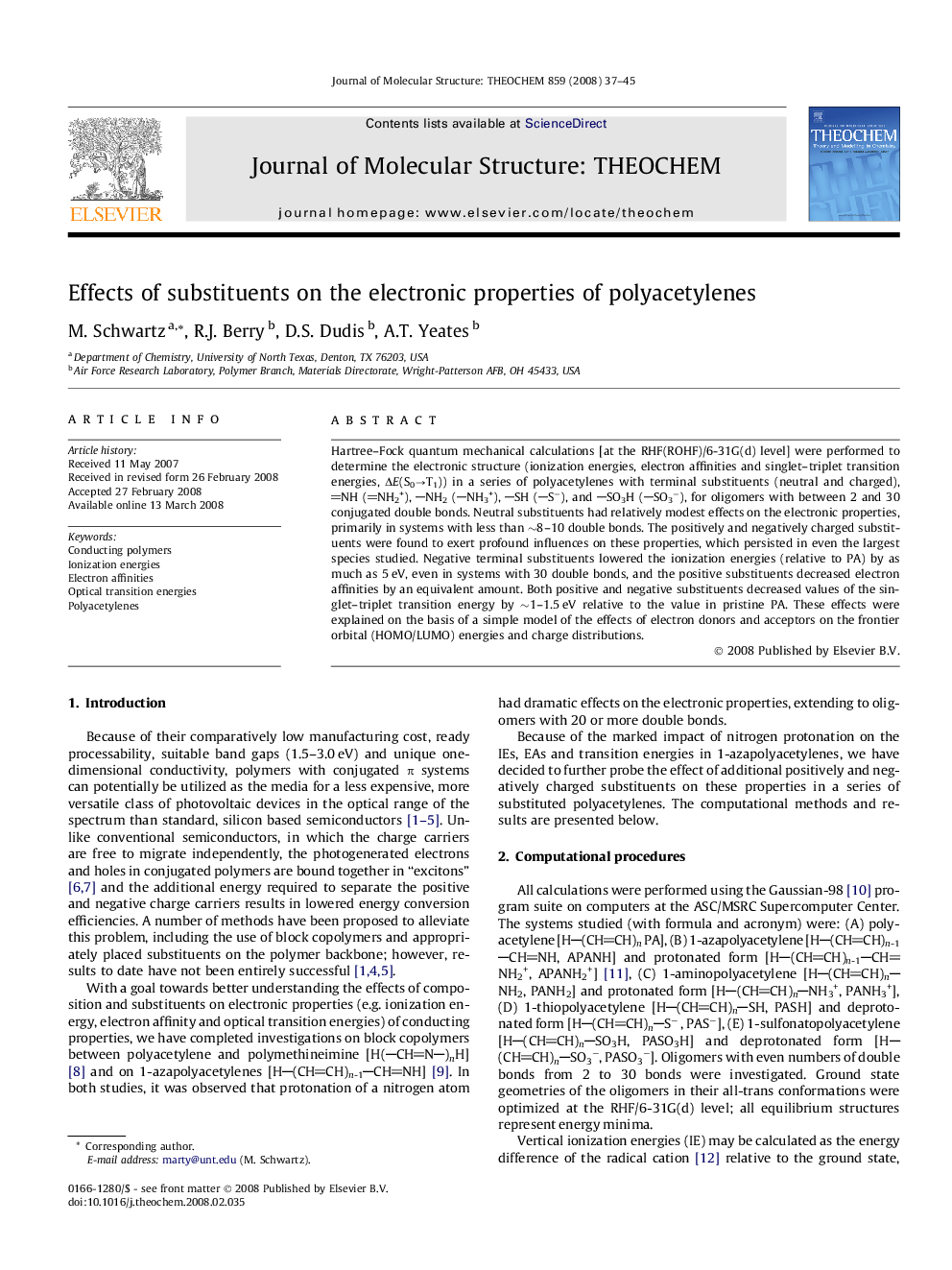| Article ID | Journal | Published Year | Pages | File Type |
|---|---|---|---|---|
| 5417683 | Journal of Molecular Structure: THEOCHEM | 2008 | 9 Pages |
Abstract
Hartree-Fock quantum mechanical calculations [at the RHF(ROHF)/6-31G(d) level] were performed to determine the electronic structure (ionization energies, electron affinities and singlet-triplet transition energies, ÎE(S0âT1)) in a series of polyacetylenes with terminal substituents (neutral and charged), NH (NH2+), NH2 (NH3+), SH (Sâ), and SO3H (SO3â), for oligomers with between 2 and 30 conjugated double bonds. Neutral substituents had relatively modest effects on the electronic properties, primarily in systems with less than â¼8-10 double bonds. The positively and negatively charged substituents were found to exert profound influences on these properties, which persisted in even the largest species studied. Negative terminal substituents lowered the ionization energies (relative to PA) by as much as 5Â eV, even in systems with 30 double bonds, and the positive substituents decreased electron affinities by an equivalent amount. Both positive and negative substituents decreased values of the singlet-triplet transition energy by â¼1-1.5Â eV relative to the value in pristine PA. These effects were explained on the basis of a simple model of the effects of electron donors and acceptors on the frontier orbital (HOMO/LUMO) energies and charge distributions.
Related Topics
Physical Sciences and Engineering
Chemistry
Physical and Theoretical Chemistry
Authors
M. Schwartz, R.J. Berry, D.S. Dudis, A.T. Yeates,
